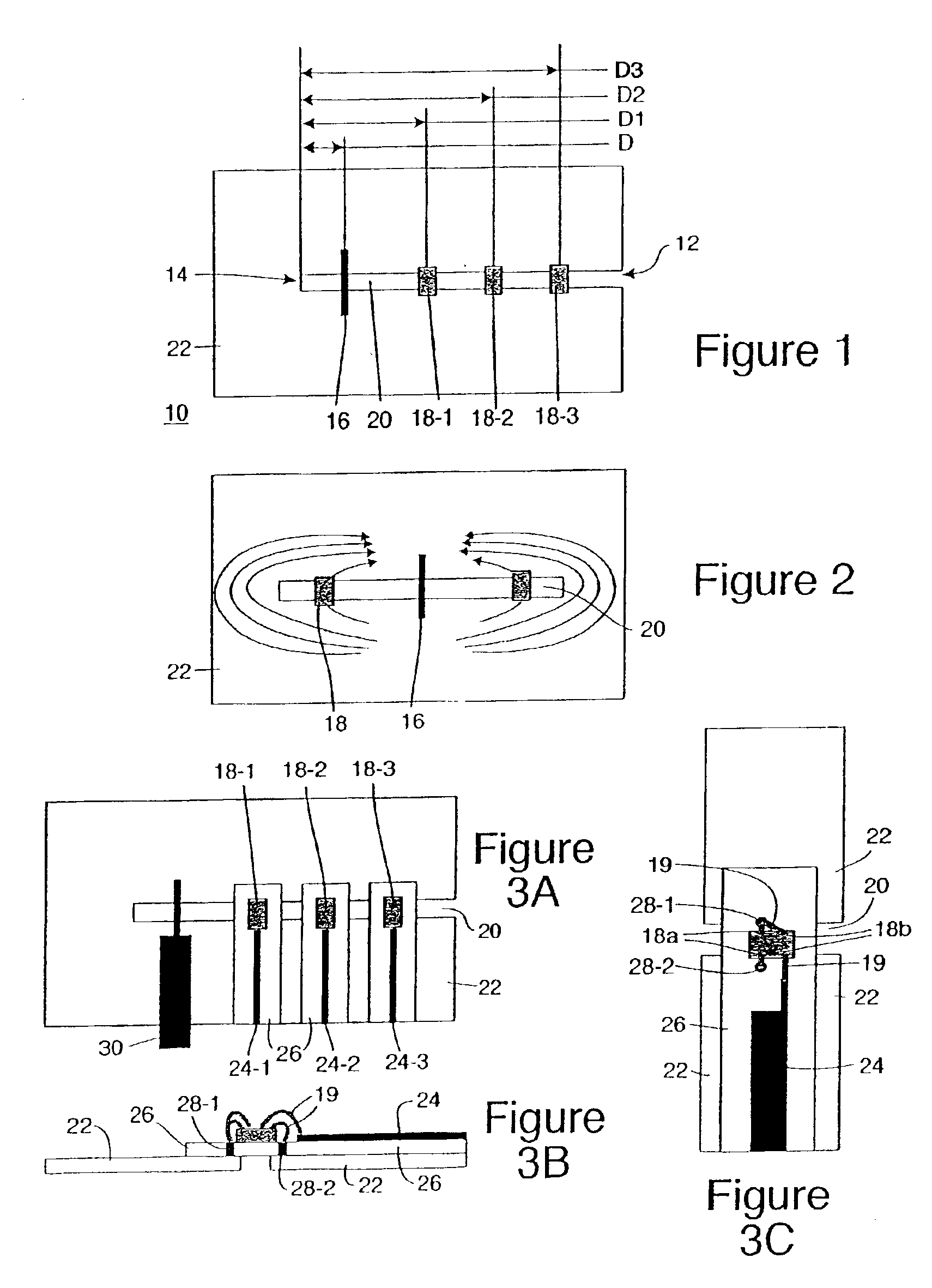RF MEMs-tuned slot antenna and a method of making same
- Summary
- Abstract
- Description
- Claims
- Application Information
AI Technical Summary
Problems solved by technology
Method used
Image
Examples
Embodiment Construction
A MEMS tuned slot antenna has several applications in the areas of frequency-tunable antennas, diversity antennas, smart antennas, and phased arrays. In its most basic form (see FIG. 1), this invention consists of a slot antenna 10 which is open at one end 12 and closed at the other end 14. The antenna has a feed point 16 near the closed end 14 of the slot 20. The location of the feed point 16 depends on the antenna geometry, but is typically disposed a distance D much less than a wavelength, usually on the order of one-eighth to one-tenth wavelength, from the closed end 14 of the slot. Between the feed point 16 and the open end 12 of the slot are disposed a series of RF MEMS switches 18-1, 18-2, 18-3 . . . which can be opened or closed by voltages applied to control lines 24-1, 24-2, 24-3 . . . (see FIG. 3). The MEMS switches 18-1, 18-2, 18-3 bridge the slot 20. By opening and closing the MEMS switches 18-1, 18-2, 18-3 . . . , one can vary the effective length of the slot 20, and t...
PUM
 Login to View More
Login to View More Abstract
Description
Claims
Application Information
 Login to View More
Login to View More - R&D
- Intellectual Property
- Life Sciences
- Materials
- Tech Scout
- Unparalleled Data Quality
- Higher Quality Content
- 60% Fewer Hallucinations
Browse by: Latest US Patents, China's latest patents, Technical Efficacy Thesaurus, Application Domain, Technology Topic, Popular Technical Reports.
© 2025 PatSnap. All rights reserved.Legal|Privacy policy|Modern Slavery Act Transparency Statement|Sitemap|About US| Contact US: help@patsnap.com



